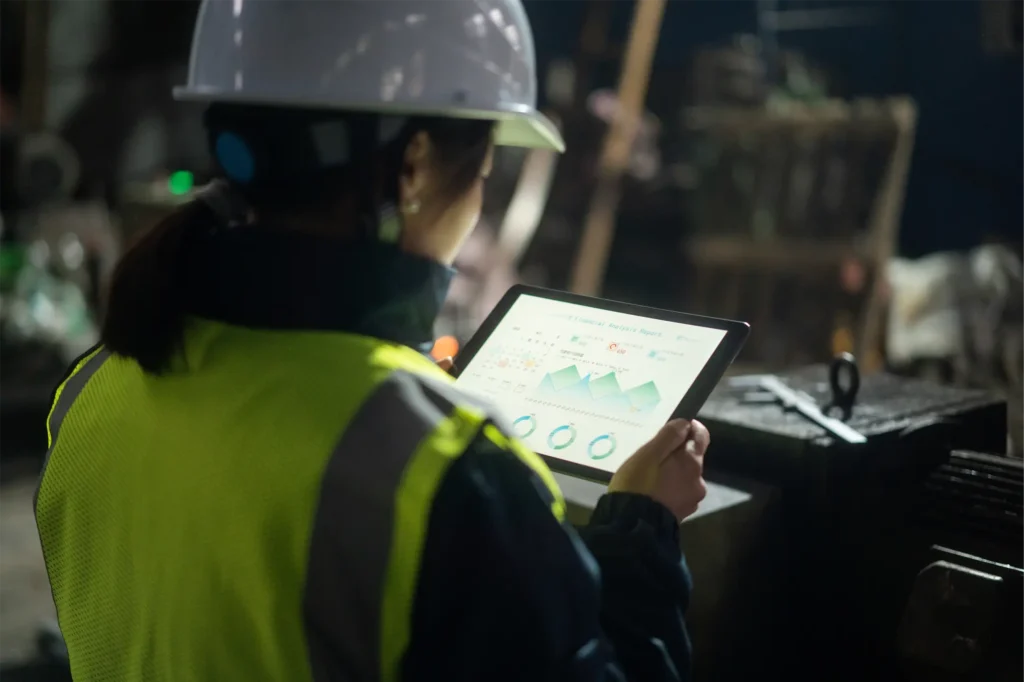Decarbonization of the power sector plays a key role in achieving climate neutrality and net-zero targets in line with the 1.5⁰C goal of the Paris Agreement.
Therefore, the rapid transformation from fossil to renewable energy sources such as wind or solar is becoming increasingly important and crucial for countries aiming for ambitious climate targets.
Despite the global pandemic, the wind energy sector had its strongest year in 2020, with a growth rate of 53% in new installations. Electricity generation from wind turbines now accounts for a considerable share of power generation worldwide.
Wind turbine technology has developed just as rapidly. An increase in hub height, rotor diameter and rotor area has been accompanied by increases in installed capacity and annual energy yield of the turbines. In the future, the trend towards larger and more powerful turbines is expected to continue. But how sustainable are new technologies?
The German environmental protection agency, Umweltbundesamt, commissioned Sphera to conduct a Life Cycle Assessment (LCA) study of the electricity generation from wind turbines in Germany. The study aimed to evaluate and update the existing body of LCA work around electricity generation from wind turbines, taking into account current technological developments.
The study used LCA to calculate the environmental footprint of electricity generation from wind turbines.
The study was carried out in line with the international standards for LCA, ISO 14040 and 14044, and underwent a critical review by a panel of three independent experts.
The assessment of the environmental impacts of electricity generation from wind and determination of relevant influencing factors over the life cycle considers the latest market-ready, state-of-the-art technologies and optimal wind conditions for the locations considered. Turbines at three locations in Germany were investigated and considered representative. They represented: offshore, onshore – strong wind, and onshore – weak wind. The components of the wind turbine and components of the wind farm were considered proportionally. The former included foundation, tower, nacelle, including gearbox, generator and other components of the drive train, the hub, and rotor blades. The latter included cables between the wind turbines and the grid connection point and offshore or onshore substations. Information provided by manufacturers and operators of modern wind turbines was used to prepare the LCA and was supplemented with data from literature reviews and expert consultations.
The following environmental impact categories and indicators have been assessed: global warming potential (alias climate change), primary energy demand, acidification, eutrophication, photochemical ozone formation, and energy payback time.
As an example, the results of the global warming potential are presented in the following table. Due to its high full load hours, the offshore wind farm achieves the lowest result for the global warming potential, followed by the high-wind onshore wind farm. The baseline scenario of the weak-wind onshore wind farm shows the highest result.
The manufacturing stage of wind turbines includes the construction of the foundation, tower, nacelle, hub, rotor blades, and the transportation and production process of the wind turbine components. Turbine manufacturing requires large quantities of materials, such as concrete and metals like steel, cast iron, stainless steel, aluminium, and copper. For this reason, turbine manufacturing has the largest environmental impact across all considered impact categories and indicators. The manufacturing of substations, maintenance (including spare parts), transportation and logistics play a less significant role. Installation and dismantling also have a small contribution. In the baseline scenario, end-of-life credits were given for recycled materials, significantly impacting the overall results. The largest credits were given for metals.
Relevant parameters for the considered wind energy systems are as follows:
- Type and quantity of materials used in the wind turbine and cables, particularly metals.
- Recycling rates of the metals and selected allocation method at the end of life.
- Electricity yield over the lifetime of the wind energy system.
The study shows that the environmental impacts of wind energy systems have improved in recent years. Since the focus of the study was on market-ready technologies, the results could be classified in the lower end of the range of outcomes for existing LCAs of wind energy systems.
Sensitivity and scenario analyses were performed on several parameters. Water depth (for offshore systems) and turbine foundation and tower construction (for onshore systems) were considered, as well as cable length, lifetime and full load hours, and end-of-life allocation for all system types. The range of results for the considered environmental impact categories was calculated based on the analyses performed. Compared to the baseline scenario, the results vary between -51 % and +61 %, depending on the location and the impact category. The large ranges of results show that the uncertainties in the results are significant.
The calculated energy payback time of the wind energy systems under consideration is strongly affected by the system- and site-specific factors. The results show that the primary energy used over the life cycle of the investigated systems can be recovered as generated wind electricity after six months to one year of system operation.
The results demonstrate that wind turbine technologies for electricity generation have developed considerably in recent years. The resource input is more efficient, and the electricity yield has increased while the environmental impacts of electricity generation have significantly reduced compared to older LCA studies. The environmental profile of modern wind energy systems is strongly dependent on the parameters of the use phase, especially the individual location with its wind speed and the project lifetime. Long system lifetimes are preferable to maximize the electricity yield of the systems. Considering the dynamic market and technology developments in wind energy systems, it seems helpful to update the body of LCA work at regular intervals and collect additional data on new technologies and production sites.
The full study, inclusive of an LCA of photovoltaic energy systems, conducted by Fraunhofer Institute for Building Physics (IBP), can be downloaded here (in German, abstract and summary in English).





